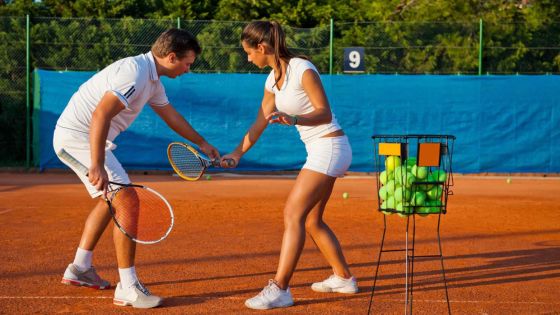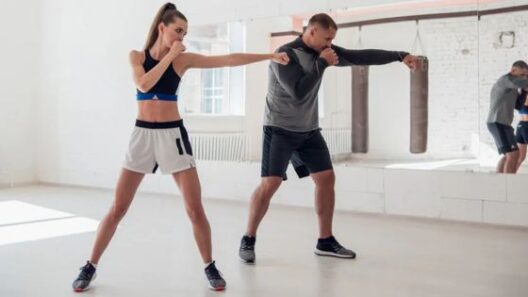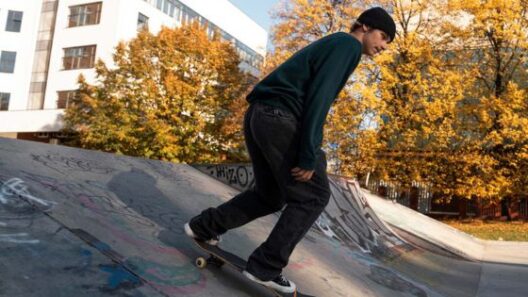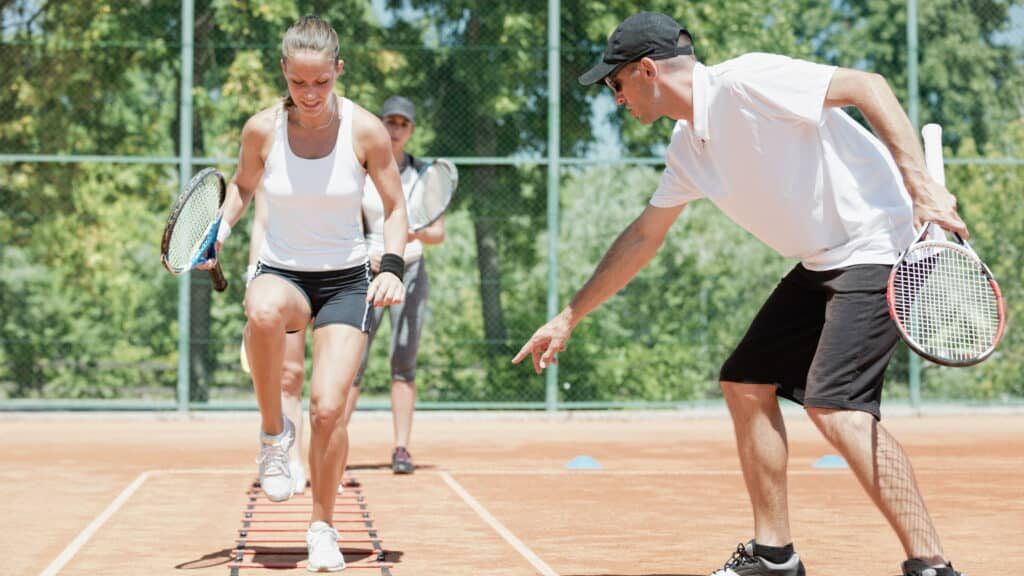
Tennis is a sport that demands a mix of speed, strength, endurance, precision, and mental focus. To elevate your performance, it’s not enough to simply play matches—you need structured training drills that target specific aspects of your game. From improving your footwork and timing to sharpening your serve and reaction speed, tennis drills help transform raw talent into consistent performance.
Whether you’re a beginner looking to develop basic strokes or an advanced player refining strategy, incorporating the right drills into your routine will make a noticeable difference on the court.
Key Takeaways
- Tennis drills enhance footwork, consistency, and shot accuracy.
- Focused practice helps build endurance, speed, and reaction time.
- Training off-court (strength, agility, conditioning) complements on-court drills.
- Both beginners and advanced players benefit from progressive, structured routines.
- Consistency in training builds confidence and long-term improvement.
Tennis Training Drill Categories

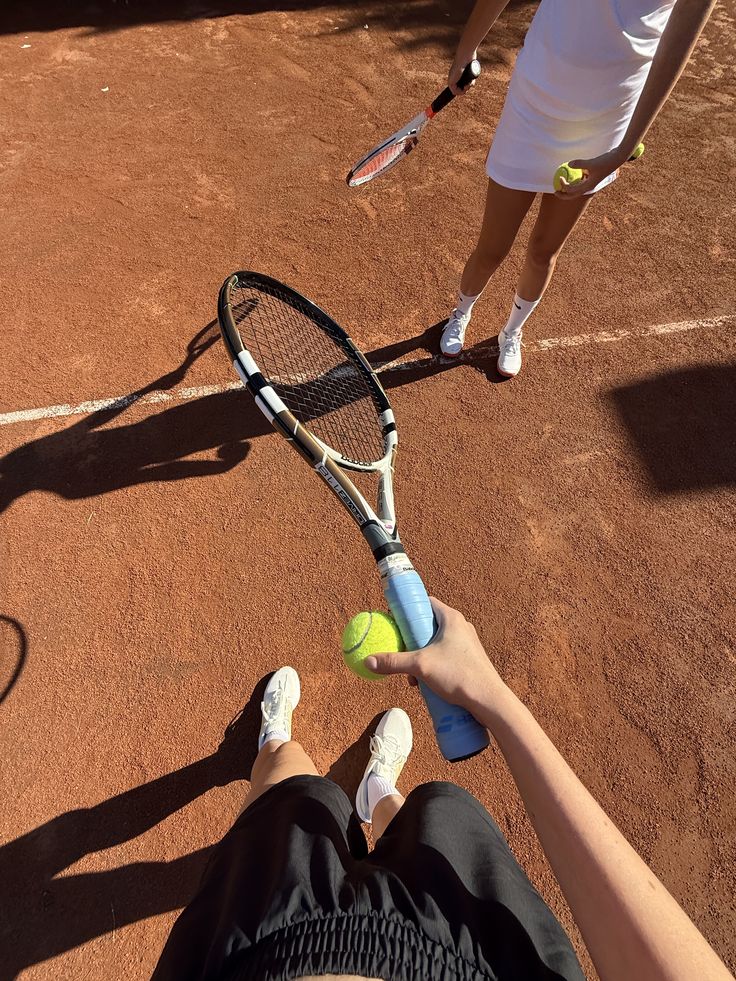
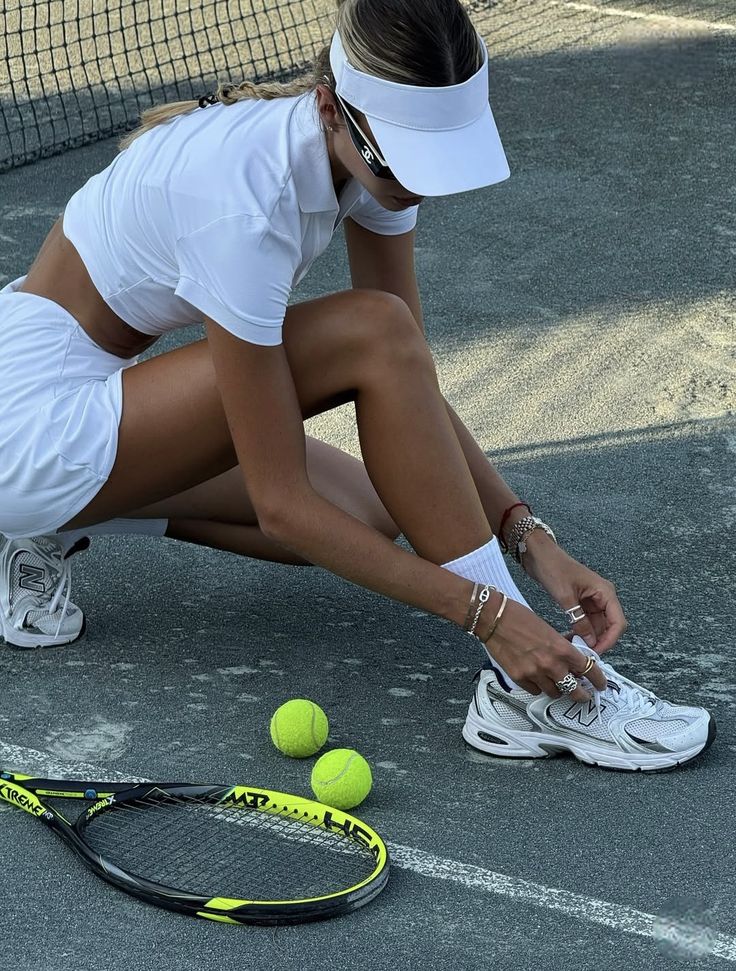
| Category | Example Drills | Focus Area |
|---|---|---|
| Footwork | Ladder drills, cone shuffle, split-step practice | Speed, agility, positioning |
| Serve & Return | Target practice, second-serve consistency, return drills | Accuracy, power, control |
| Groundstrokes | Crosscourt rally, down-the-line challenge, wall rallies | Consistency, depth, shot variation |
| Volley & Net Play | Reflex volleys, approach & volley, overhead smashes | Reaction speed, net dominance |
| Conditioning | Interval sprints, jump rope, medicine ball throws | Endurance, strength, explosive power |
| Mental Training | Visualization, focus drills, mindful breathing | Confidence, resilience, concentration |
Footwork Drills for Better Court Coverage
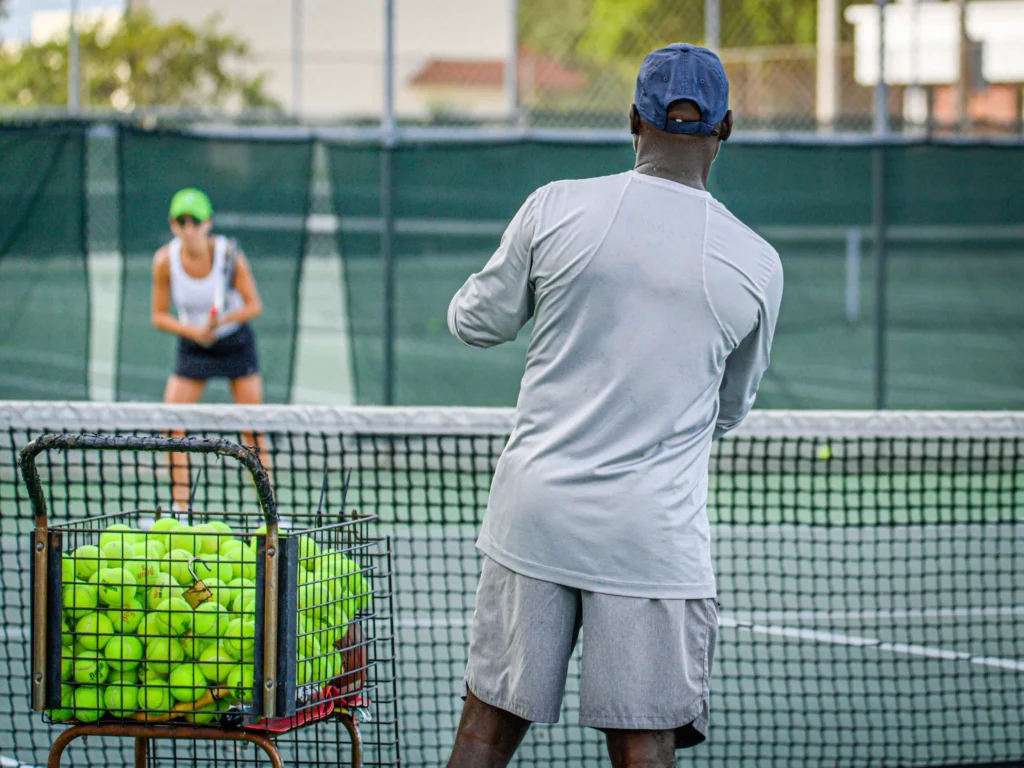
Good footwork is the foundation of strong tennis performance. The faster you can get into position, the more effective your shot will be.
- Ladder Drills: Improve quickness and coordination by moving through an agility ladder with side steps, crossover steps, and hops.
- Cone Shuffle Drill: Place cones across the baseline and practice side shuffles between them to simulate court movement.
- Split-Step Practice: Repeatedly practice the split-step before each shot to react faster to your opponent’s play.
Serve and Return Drills
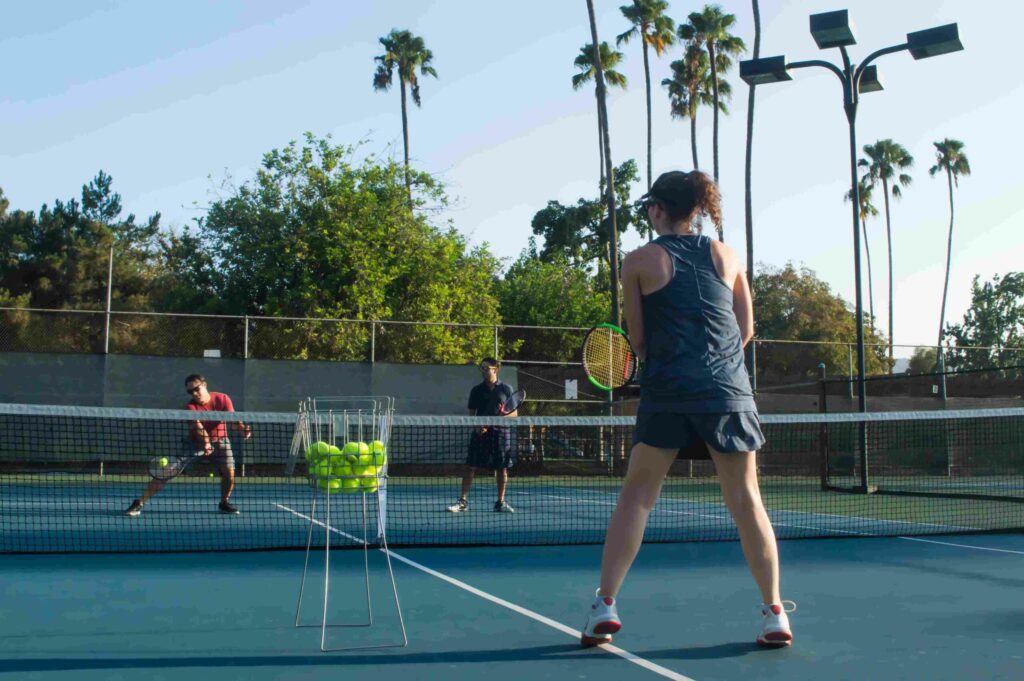
The serve and return are two of the most critical shots in tennis—often deciding points before a rally begins.
- Target Practice for Serves: Place cones in different service box areas and aim your serves to improve precision.
- Second Serve Consistency Drill: Practice hitting 50 second serves in a row, focusing on spin and placement rather than power.
- Return Reaction Drill: Have a partner serve repeatedly while you practice deep, controlled returns to neutralize the point.
Groundstroke Consistency Drills
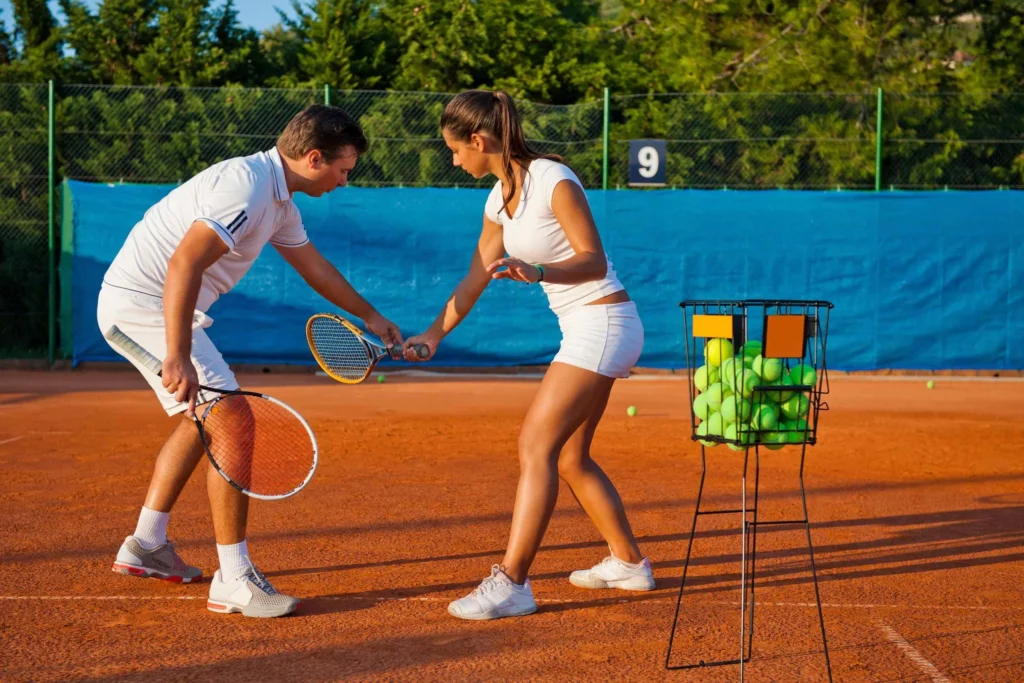
Rallies often determine the outcome of a match. Drills that focus on consistency and depth are key.
- Crosscourt Rally Drill: Hit forehands or backhands crosscourt with a partner, keeping the ball deep to control pace.
- Down-the-Line Challenge: Alternate between crosscourt and down-the-line shots to improve accuracy and versatility.
- Wall Rally Drill: For solo practice, rally against a wall while setting a target number of successful hits without errors.
Volley and Net Play Drills
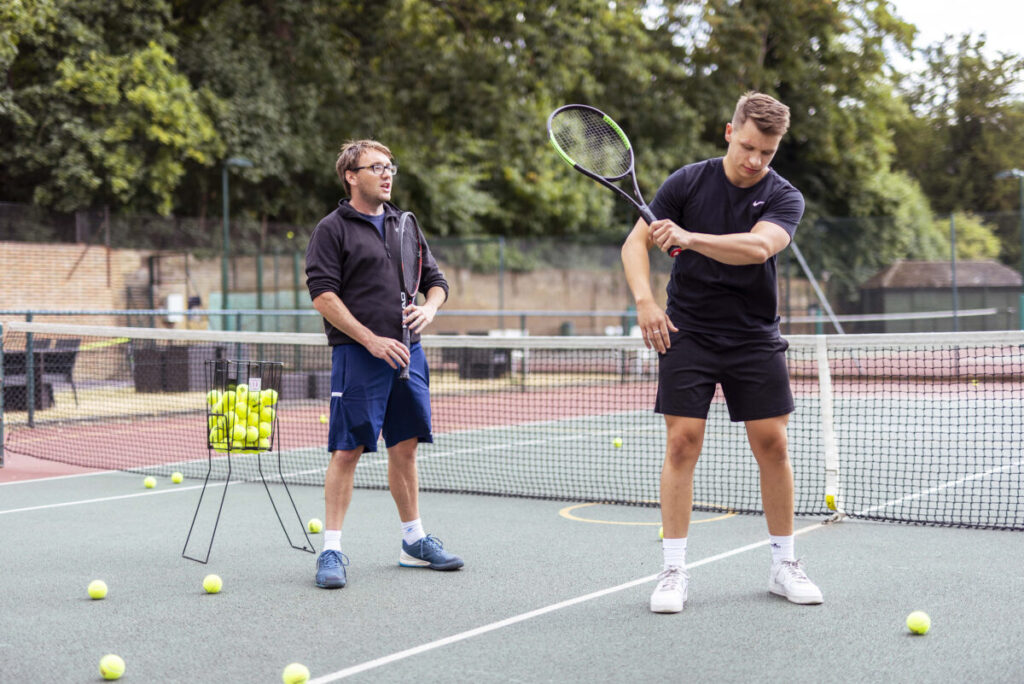
Strong net play can pressure your opponent and shorten points.
- Reflex Volley Drill: Stand close to the net while a partner feeds balls quickly, forcing you to react instantly.
- Approach and Volley Drill: Practice hitting a deep approach shot followed by closing in for a volley.
- Overhead Smash Drill: Improve footwork and timing by practicing overheads with lobs fed by your coach or partner.
Conditioning and Endurance Workouts
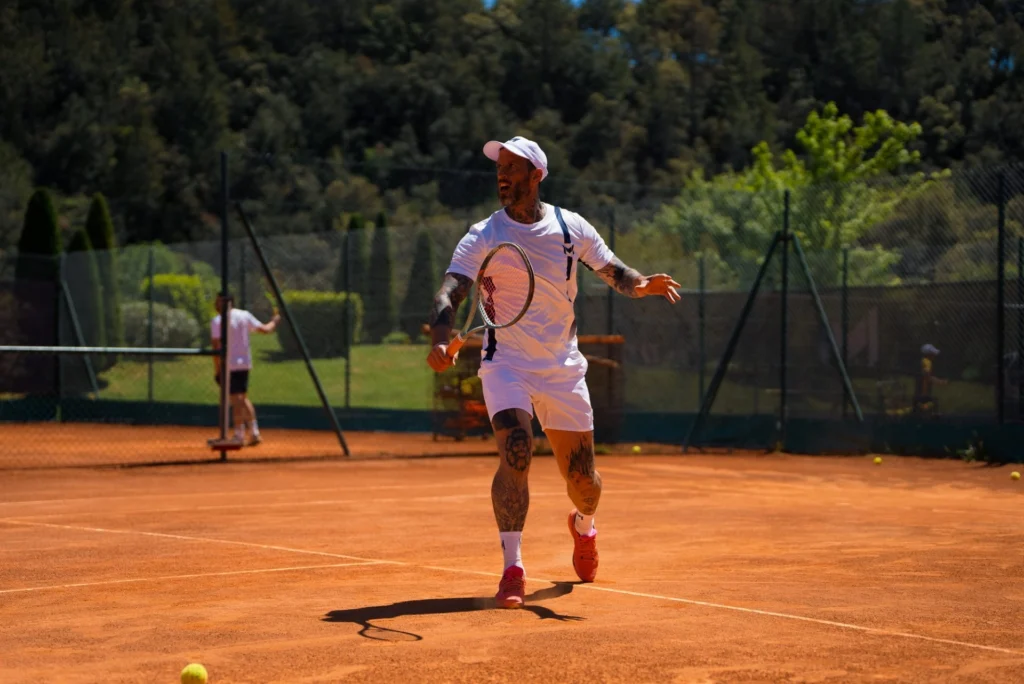
Tennis isn’t only about strokes—it’s also about fitness. Off-court conditioning is vital.
- Interval Sprints: Mimic point play with 20–30 second sprints followed by short rests.
- Medicine Ball Throws: Build rotational power for serves and groundstrokes.
- Jump Rope Training: Improve foot speed, agility, and cardiovascular endurance.
Mental Training and Visualization
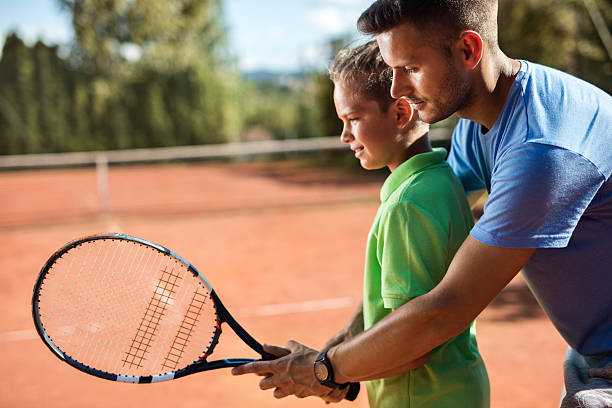
Tennis is as much mental as it is physical. Incorporate:
- Visualization Drills: Picture successful serves, volleys, and rallies to build confidence.
- Focus Training: Practice drills with a set number of shots to increase concentration under pressure.
- Mindful Breathing: Learn to reset between points using controlled breathing.
FAQ: Tennis Training Drills
Q: How often should I practice tennis drills?
Most players benefit from 2–4 focused sessions per week, depending on goals and fitness level.
Q: Can I practice tennis drills alone?
Yes. Wall rallies, serve target practice, and fitness drills can be done solo, though partner practice adds variety.
Q: Do beginners need the same drills as advanced players?
Beginners should focus on fundamentals and consistency, while advanced players can add strategy and pressure-based drills.
Q: Are off-court workouts necessary for tennis?
Absolutely. Strength, conditioning, and agility training enhance performance and prevent injuries.
Q: What’s the best drill to improve match performance quickly?
Footwork and serve-return drills provide the fastest improvements because they impact almost every point.
Conclusion
Tennis drills are essential for sharpening every aspect of your game—from footwork and consistency to power and mental strength. By dedicating time to structured practice and mixing on-court training with off-court conditioning, you’ll not only improve performance but also build confidence during matches. The more intentional and consistent your training, the more noticeable your progress will be.
